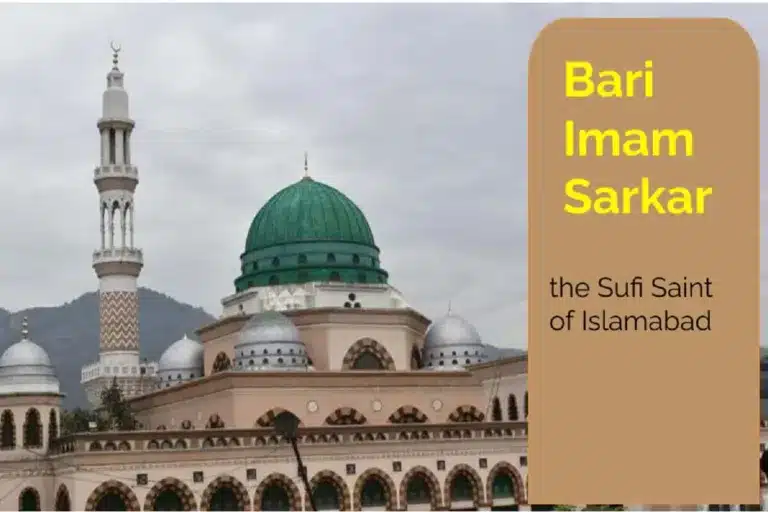Exploring Heritage Sites outside Lahore Fort
There is plenty of heritage, culture, and history outside Lahore Fort and Old Walled City.
Lahore was the twin-seat of power of the Mughal Empire in India, besides Agra.
Mughal Akbar built the massive Lahore Fort in 1526 AD to keep the legacy of Mughals intact for centuries to come – and he did.
Where there are claustrophobic forts, there is the need for the boring royals to frolic away in seclusion from their subjects.
These are the few of the best heritage and historic sites outside Lahore Fort and old walled city:-
- Shahdara Gardens
- Noor Jahan Tomb
- Jahangir Tomb
- Asif Jah Tomb
- Shalimar Gardens
- Lahore Museum
- Anarkali Tomb
Also, see

Shahdara Gardens outside Lahore Fort
Shahdara recreation and hunting spot Gardens outside the Walled City of Lahore, on the opposite bank of the Ravi River, was one such spot.
This hunting, relaxing, and recuperating area was the last stop before the giant gates of Lahore City were opened to the public, the next morning.
I went to this crumbling symbol of Muslim dominance in India, to live the lives of Mughal Royals in my head.
The first one in line when I got there was. . .

Mughal Jahangir’s Tomb Shahdara
Jahangir’s tomb is 15 min drive off GT Road, along narrow roads.
This tomb is one of the best heritage sites outside of Lahore Fort and is also on the UNESCO would be heritage list.

History of Mughal Emperor Jahangir
Jahangir was the son of the mighty Mughal Akbar and was anointed to take over in Akbar’s time. His reign lasted 1604–1627.
The law of natural selection dictates that hereditary succor is never as good as his ancestor unless there is competition.
That’s exactly what happened here.
Jahangir was the successor that enjoyed all the wealth and power he could dream of and desired no more –, which is fatal for an empire.
He was honest, tolerant, aesthetic, and compromising – that’s what led to his ultimate downfall.
When you want to be a benevolent dictator king like every Mughal aspired to be, then there is no room for anyone else having power – that was Jahangir’s failing.
He shared his power with a coterie junta, his wife, brother in law and father in law and their cohorts.
Also, the King liked drinking, and opium, which clouded his judgments of people at critical times.
The Colonial Portuguese and British gain footholds in the South of India, during Jahangir’s lax regime, which was impossible to dislodge later by Aurangzeb.
Then, there is the ill-advised execution of Guru Tej Bahadur a Sikh holy man.
Jahangir did commission excellent work architectural art such as Shalimar Bagh, Shahdara, and Itmaad ud Daula Tomb, Akbar’s tomb in Agra, and Jahangir Fort Occhra Madhya Pradesh, which were revolutionary for those times.
It is said that Shah Jehan’s Taj Mahal was inspired by Jahangir’s building designs.

Jahangir’s wife’s Junta
Eventually, his coterie or “junta” that was ruling India, with him as the ceremonial head reached the end of their capacity.
Jahangir was ambushed and captured by Mahabat Khan, his supposed ally in the Khyber Pakhtoon Khwa area.
Jahangir died soon after being released in 1627 at Rajauri near Kashmir.
Noor Jehan built Jahangir’s tomb during Shah Jehan’s reign, along with her own.

Tomb of Anarkali and history
Jahangir and his wife Noor Jehan’s unusual bond is the inspiration for the myth of his beautiful consort Anarkali, who never existed.

Anarkali tomb in the Punjab Civil Secretariat grounds is said to be that of Jahangir’s wife Sahib e Jamal Begum.
This legendary site is not open to the public, but if you know some civil officials in Punjab, a visit can easily be arranged.
Anarkali’s tomb is a beautiful heritage site outside of Lahore Fort that not everyone gets to see.
So much for eternal love and having yourself interred for your beloved prince.
To get to Jahangir’s tomb in Shahdara, you drive on the beltway, then on exit the Shahdara Bridge.
At the town center Shahdara, a small lane goes toward the tomb complex main gate.

Looting of Shahdara Gardens Heritage sites
- All four heritage sites outside Lahore Fort, Jahangir, Noor Jehan, Asif Jah, and Mughal, were originally in the same royal yard, but the British build a railroad line that separated Noor Jehan from the rest.
- The British also handed over Jahangir’s tomb to Ranjit Singh who had his Spanish Mercenary live there and desecrate the grounds.
- The Mercenary is said to be buried there on the grounds in an unmarked grave, along with the caretakers of the tomb complex.
- British authorities also dumped their heavy railroad equipment in the Mughal Sarai (rest house) grounds for quite a while, damaging the original grandeur of the place.
- Ranjit Singh had the place vandalized and stripped of the precious stones that were engraved in the marble and installed in the Golden temple Amritsar.
- When the colonial British got tired of Ranjit Singh unable to fulfill his tax quotas, they kicked him out too in the Second Anglo – Sikh war of 1849.
- Serves him right I guess for colluding with the devil.
Recently, the government of Pakistan has found some funds to upkeep and renovate all these heritage gems for the people of the country.
Kids in Pakistan should feel proud of their Mughal and Muslim heritage in India.
Even today in these gardens with the Ravi River in the distance, you feel the royalty, peace, and romance of the place.

Why was Jahangir buried in Shahdara?
After all, Jahangir is said to have frequented these gardens along with his 20th and most influential wife Noor Jehan (originally Mehr un Nisa) and spent considerable time discussing business with his most trusted confidant.
Deer and leopard hunting grounds in the forests of Shahdara have long been decimated to cruel human occupation and apathy.

Shahdara’s gruesome history
Another macabre historical snippet comes to mind here.
In 1857, the Muslim freedom-seeking soldiers of the British army that were running away to save their lives were either shot in their skulls while trying to swim across into Shahdara or were captured, lined up, shot, and dumped in Shahdara wells, near this yard.

Noor Jehan’s (1577–1645) tomb Shahdara, Lahore
Noor Jehan’s (1577–1645), was buried here long after Jahangir died.
I drove up to Mehr un Nisa’s tomb, driving over the old Ravi Bridge.
The rectangular structure with arched walkways, red stone exterior, marbled floors, and fresco paintings were a pleasant sight to see.
Each archway had a mesh on top tilted in such a way that sunlight reaches the central chamber from dawn to dusk.
Noor Jehan had 18 years to design and supervise the construction of her mausoleum after she was defeated and sidelined by Jahangir’s son and successor – Khurram Shah Jehan.

The secret chamber of Noor Jehan’s Tomb
The most interesting thing to see here is the underground chamber of Noor Jehan’s tomb where the actual sarcophagus was embalmed and suspended in midair.
I was led down this not-so-secret burial chamber where Noor Jehan had her dead body and that of her daughter, Ladli Begum suspended from the ceiling.

It was unusual for a Muslim princess not to have her body buried.
The British buried the dead bodies and removed the riches from this chamber.
After standing on the roof of Noor Jehan’s tomb, imagining the glory of so much power in one place, I decided to chill out at Shalimar Gardens.

Noor Jehan (Mehr un Nisa) Queen’s Gambit
Call her opportunistic or a social climber. Noor Jehan was loyal to her own.
- She had her father made Chief Minister with the title of Itmad ud Daula and a tomb built in Ghayas Beg’s honor.
- Her brother was elevated to the rank of commander in Chief of Jahangir with a tomb right beside that of her’s.
- She had her daughter Ladli Begum from a previous marriage, married to Shahryar, Jahangir’s son and heir.
- Nearly got Shahryar declared Ruler of India
It was just her bad luck that her fountain of power, Jahangir died suddenly without announcing her choice of an heir as king.
She kept Jahangir’s death secret for quite some time, but eventually, Shah Jehan found out and lead a breakaway faction of troops to defeat government forces.
Dissidents that were tired of Noor Jehan’s coterie and had her banished to Lahore.
Noor Jehan was the daughter of a Persian diplomat that had fallen foul of the king there.
Her family was reduced to poverty because they escaped from Persia to Kandahar.
Her father rebuilt their fortunes while working as a government official of Akbar and was rewarded for this loyalty.
Mehr un Nisa received the best training in arts, military skills, court etiquette, dressing, and grooming.
This lady was reputed to be convincing in her style of addressing her detractors that left them spellbound by her charm.
Noor Jehan was named tiger slayer when she shot four tigers in one of her hunting expeditions with Jahangir.

Did Noor Jehan have her husband murdered?
When Noor Jehan’s mercenary husband Ali Quli Turk “Sher Afghan” died resisting arrest by Jahangir’s official in Bengal, rumors circulated that Jahangir was behind it.
This theory has some truth in it as the lady ended up in the King’s Harem immediately afterward, and eventually, Jahangir did marry her four years later.
Historians, however, write that the marriage happened after the Ruler was charmed over by Noor Jehan at Anarkali Meena Bazar, where only the king got to ogle over pretty young things – unlikely.
Noor Jehan quickly consolidated her hold over administrative services around Jahangir and even had a coin printed in her name – something unheard of about a royal lady in those times.
With her brother Asif Jah, this junta ruled over India behind Jahangir.
Naturally, when the bungling Jahangir was ambushed and captured by a dissident Mahabat Khan, Noor Jehan personally led a charge on an elephant against her enemies.
She was captured too.
Noor Jehan was artistic herself and nurtured arts, crafts, fashion, and architecture.
Some current designer fads in Pakistan are attributed to Noor Jehan like the tight pajamas worn under Kurtas.
The tomb of Jahangir is said to be inspired by the Central Asian structures, whereas the bulbous Dome over Asif Jah’s tomb is characteristic Persian.
Now I know why my female Lahori lady acquaintance was annoying, yet charming.

Mughal Akbari Sarai Shahdara
Akbari Sarai was formally built-in 1637, but there was always a structure there before it was built.
Mughal Sarai was a sort of motel where weary travelers could dine, wash-up, get medical care, rest, and food for themselves and their animals under the protection of Mughal guards of Lahore.

Lahore Walled city’s massive doors were opened only from dawn till dusk every day, so if you reach after dark, Mughal Sarai was to be your brief stop for the night.
Akbari Sarai also served as the Royal Mail distribution center.
This rest house still had 180 rooms intact and some of them still had original doors with brass fittings 400 years old.
The Pietra Dura form of precious stone inlay work was first started here by the Mughals.

Asif Jah’s History in Lahore
Asif Jah’s (1569–1641) claim to fame was that he was the
- The brother of the most powerful lady in India, who had Emperor Jahangir’s confidence.
- Father of Arjumand Bano or Mumtaz Mahal, the trusted wife of Shah Jehan of Taj Mahal Fame.
- Asif Jah was also made in-charge of Jahangir’s troops.
- The governor of Lahore, the most important city of Mughal rule outside Agra.
Some in charge he was; Jahangir was ambushed near Attock Pakistan and was captured alive.
The local historian had nothing good to talk about Asif Jah, calling him a philanderer and decadent.
Mirza Abdul Hassan Jah (Asif Jah) even betrayed his sister when he sided with the new king and the husband of his daughter Shah Jahan.
So, now you know why sycophants are not good in a dictatorial system of government
I say Asif Jah was just what he was expected to be – loyal to power and whoever held it.

Asif Jah’s Tomb Shahdara
Asif Jah’s tomb is also near Jehangir’s heritage site complex, outside of Lahore Fort.
I went up to Asif Jah’s tomb and found it to be the prettiest of all other sites.
It was a simple structure with a huge dome rising skyward open at all sides for light to reach the central burial place.
This simple Persian art, which was once covered in white marble was interesting because I climbed into this huge dome that was hollow from the inside and covered with bat droppings.
The dome had no column to support its heavy center and relied on precision engineering to keep it from crashing in the middle for 400 years.
All the marble was stripped by the colonial British and their proxies.

Shalimar Gardens Lahore
“Shala” means pleasure in Turkic and “Marr” means place.
Shala-mar Gardens were built 1641–45 by Shah Jehan and had his harem in one corner.
These historic Gardens are about half an hour’s drive from Shahdara, located very near an exit on the ring road in Lahore.
Shalimar Gardens were once a sure stoop for foreign dignitaries whenever they visited Pakistan, to show our rich heritage.
Somewhere along the line, Pakistan stopped being heritage and history friendly, when Ayyub banned the annual Mela chiraghan here.
Shalamar Bagh Heritage site is outside of Lahore Fort but not in Shahdara.

I parked my car paid Rs 20 fee at the entrance and walked into Shalimar, which is on UNESCO World Heritage Site List.
The first thing that I noticed was the gaudy tea stall at one corner of the gardens.
While enjoying my piping hot tea, Dahi Bhallay, and Gol Gappay, I realized this should not be inside a UNESCO site.
Shalamar Bagh is one place where you can find peace, far away from the bustle of Lahore.
A Baradari at its entrance has a droopy styled roof that I have not seen elsewhere.
As soon as you enter the gardens, up ahead are the queen’s residential quarters, on the left is the Royal Harem and on the right is the royal pavilion and water fountains.
The water was gravity fed and was lit up with lanterns over which the water flowed seamlessly without extinguishing the flame.
While the Mughal king sat on his throne on the center of this foundation pavilion musicians and singers belted out one raag and the next across the fountain to amuse the royals.

Lahore History and Heritage Museum
Lahore Museum is another run down but a precious piece of heritage that I could not miss.
It is right on Lahore Mall road, near Anarkali Bazar, where Jahangir met Noor Jehan.
This museum is quite far from the heritage sites outside of Lahore Fort.
Lahore museum timing is 9 am to 4 pm so do not be late.
This museum was built by British colonials.
The heavy guard presence around the museum is more to deter Pakistanis from knowing the local heritage than saving artifacts.
Still, precious artifacts get stolen – how incompetent can you get?
There are guards on all corners of the museum but no curators to explain the marvelous items on display.
The Lahore museum has
- A Kushan Gallery,
- Buddhist Gallery
- Hindu Heritage Galley
- Sadiqain art Gallery
- Miniature Mughal Art Gallery
- Military gallery
- Pakistan’s political gallery
Since there is already a Pakistan Military Museum in Lahore Garrison that is better funded and curated, it would be a better idea that Lahore museum drops the military part and stick to heritage and history.
I loved the Indus Valley history part from BC times to 500 AD.

Best Things about Lahore Museum
- I learned here that Persian King Darius I had sent a royal surveyor scout to sail from Attock to Multan in 500 BC, to prospect the edges of the Persian Empire and he reported dark-skinned hunter-gatherers, beyond the Indus River.
- Darius did take over some portions in the West that now constitute Baluchistan.
- The crowning jewel in the Lahore museum gallery is the Starving Buddha, which has a replica in Sri Lanka where Asoka’s son and daughter took Buddhism from Gandhara in Pakistan.

- Some of the ancient deities here are the rarest you can ever find anywhere else in the world about Gandhara in Pakistan.
- One female deity pre-dates Buddhism in Pakistan and has no precedent anywhere in these patriarchal areas of those times.
- I enjoyed the Sun god figures as well.

Conclusion
Pakistan must own its 2500-year heritage that includes Mughal as well if it wants to be recognized as an ancient civilized nation of people.
Next time you visit Lahore, break down the heritage tour of the old Lahore walled city and then the sites outside.
If you find my writing useful, do comment below the blog, share, and subscribe.









This is an amazing pictorial overview of historical Lahore. I congratulate the author.
Thank you. Do subscribe to our blog.